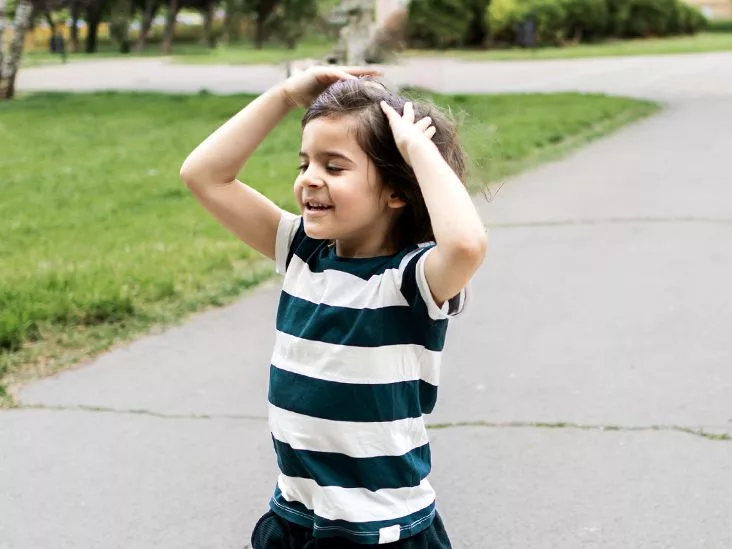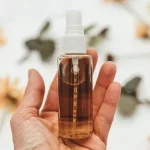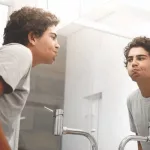Hey there, fellow parent (or caregiver)! If you’ve found yourself scrolling through endless tips, buying every “miracle” product on the shelf, and still hearing the dreaded “scratch‑scratch” from your child, you’re not alone. The short answer? Most repeat cases boil down to a few simple, fixable slip‑ups—missing a nit, a second treatment at the wrong time, or a surprise encounter at school. The good news is that once you understand why the cycle keeps turning, you can break it for good.
In this friendly guide I’ll walk you through the science, the common pitfalls, and the exact steps you can take right now. Think of it as a coffee‑chat + cheat sheet, so you can get back to playdates, bedtime stories, and a lice‑free home.
Why Recurrence Happens
What are the most common causes?
1️⃣ Incomplete treatment
The first thing many families overlook is that a single application rarely wipes out every single bug. Lice lay eggs (called nits) that cling tightly to the hair shaft. If even a handful of these nits survive, they’ll hatch in a week and the infestation spikes again. The WebMD article explains that most over‑the‑counter products kill live lice but miss many nits, which is why a second treatment 7‑9 days later is essential.
2️⃣ Re‑exposure
Kids are social butterflies—head‑to‑head contact at school, sleepovers, sports, or even sharing a beloved baseball cap can bring the bugs back. The CDC notes that the primary mode of spread is direct hair contact, not dirty hair, so even a clean‑cut child can get reinfested within days of a new contact.
3️⃣ Lice‑resistant strains
Just like bacteria can become antibiotic‑resistant, lice can develop resistance to common pesticides (permethrin, pyrethrins). When you keep using the same “same old” product, you may be feeding a super‑resilient colony. According to Lice Clinics of America, resistant lice often require prescription‑strength or non‑chemical options such as heated‑air devices.
How does the lice life‑cycle drive recurrence?
Egg → Nymph → Adult (each stage ~7‑10 days)
Think of the life‑cycle as a three‑act play. Eggs (nits) hatch after about a week, turning into nymphs that grow into adults over another week. An adult can lay up to eight eggs a day! If you treat on day 0 and miss the eggs, those hidden babies will emerge just as you’re celebrating a “clear‑head” victory.
Can a child develop immunity?
No natural immunity
Unlike chickenpox or the flu, head lice don’t trigger an immune response that protects against future attacks. Each encounter is a fresh event, which is why vigilance matters every season.
Is “dirty hair” a myth?
Hair type doesn’t matter
Lice are opportunistic—they’ll set up shop on straight, curly, thick, or thin hair alike. The only thing they need is a warm scalp to feed on. So, reassuring yourself that “we keep the house clean” doesn’t actually lower the risk. The focus should be on thorough treatment and smart habits.
Spotting Early Signs
What are the tell‑tale signs?
Itching, red bumps, visible lice or nits
Kids often scratch their heads, complain of a “tickle,” or you might see tiny white specks (nits) glued near the scalp. A quick visual check under good lighting can reveal live lice—small, brownish insects about the size of a sesame seed.
How to do a quick head check?
Step‑by‑step visual guide
- Gather a bright flashlight and a fine‑tooth nit comb (stainless steel works best).
- Divide the hair into four sections and comb from scalp outward, wiping the comb on a white paper after each pass.
- Look for live lice (moving) and nits (oval, stuck at a 45‑degree angle).
- Repeat on both sides of the head and behind the ears.
When to involve the school or daycare?
Notification protocol
Most schools have a “head‑lice‑free” day policy. Call the office as soon as you confirm an infestation, ask them to notify other parents, and request a brief “no‑head‑contact” period (usually 24‑48 hours). Transparency helps prevent a silent spread.
Tools & apps that help
Recommended nit‑combs and checklist apps
Brands like Renaissance or LiceMeister offer sturdy stainless‑steel combs that slide through tangled hair without breaking. For organization, the free “Lice Tracker” app lets you log treatment dates, set reminders for the second dose, and note any contacts at school.
Effective Treatment for Kids
What treatment options work best?
OTC, prescription, and non‑chemical
| Option | Active ingredient | Pros | Cons |
|---|---|---|---|
| Permethrin 1% (OTC) | Permethrin | Widely available, inexpensive | May not work on resistant lice |
| Spinosad (Presc.) | Spinosad | Effective against many resistant strains | Higher cost, prescription needed |
| Ivermectin (Presc.) | Ivermectin | Oral option; works systemically | Not FDA‑approved for lice in U.S.; doctor needed |
| Heated‑air device (AirAllé) | Heat (125‑130 °F) | Non‑chemical, kills eggs & lice | Professional service cost |
How to properly apply a treatment?
Step‑by‑step timeline
- Read the label. Some products require a 10‑minute soak, others a quick spray.
- Apply to dry hair. Ensure the scalp is fully saturated.
- Wait the recommended time. Don’t rinse early; the chemicals need time to penetrate the nits.
- Comb out nits. Use a fine‑tooth nit comb every 2‑3 days for two weeks.
- Second dose. Set a reminder for day 7‑9 (or as the product directs). This catches any eggs that hatched after the first round.
How to remove nits completely?
Comb‑out technique
Start at the scalp, where nits are easiest to grab. Pull a thin section of hair, place a nit comb at the root, and gently slide it down to the tip. After each pass, wipe the comb on a white paper towel and repeat until the section is nit‑free. Doing this every 48 hours for two weeks shaves off 95 % of hidden eggs.
What if lice are resistant?
Switch strategies
If you see live lice 48 hours after treatment, you’re likely dealing with a resistant strain. Switch to a prescription option such as spinosad, or book a one‑day session with a professional heated‑air service. According to Theresa, a registered nurse and lice coach, “super lice” require a non‑chemical or prescription approach to break the cycle.
Preventing Reinfection
How to stop the cycle at home?
Immediate post‑treatment steps
- Wash all bedding, pillowcases, and washable clothing in hot water (≥130 °F) and dry on high heat for at least 30 minutes.
- Seal non‑washable items (stuffed animals, hats) in a sealed plastic bag for 48 hours; lice can’t survive more than two days off a host.
- Vacuum carpets, sofas, and car seats to pick up stray eggs.
Family‑wide approach
Treat all members, even if asymptomatic
Adult carriers often have a few adult lice that go unnoticed. A quick nit‑comb for the whole household reduces the hidden reservoir. This “family lice treatment” mindset cuts the odds of a hidden source reviving the infestation.
Safe habits at school & activities
Avoid sharing and head‑to‑head contact
Teach kids to keep hats, scarves, hairbrushes, and headphones to themselves. Encourage sports teams to store helmets separately and use personal liners. A simple “no‑share” rule can slash reinfestation rates dramatically.
How often should you re‑check?
Weekly checks for a month, then monthly
During the first 30 days after treatment, do a quick head inspection every 7 days. If you see no nits, shift to a monthly check during the school year—especially after sleepovers or field trips.
Products that help keep lice away
Dimethicone‑based repellents
Some parents swear by a light spray of a dimethicone‑based product (often marketed as “silicone spray”). It coats the hair, making it hard for nits to stick and for lice to crawl. Use it after each wash for an extra safety net.
When to Call a Professional
Signs that DIY isn’t enough
Persistent lice after two proper treatments
If you’ve followed the instructions, repeated the second dose, and still see live lice after two weeks, it’s time to bring in experts. The presence of “super lice,” confirmed by a professional comb‑out, signals that home methods are no longer enough.
What to expect from a professional visit?
In‑home nit‑comb, heated‑air, follow‑up
A certified lice‑removal tech will:
- Use a stainless‑steel nit comb on every family member.
- Apply a FDA‑cleared heated‑air device that dehydrates lice and eggs without chemicals.
- Provide a clear retreatment schedule (usually a second visit 7‑10 days later).
Cost vs. value
Price, insurance, and missed school days
Typical in‑home services range from $150‑$300 for a family of four. While that sounds steep, compare it to the hidden cost of missed school days, repeated product purchases, and the emotional toll of a lingering infestation. Many families find the one‑time professional fee worth the peace of mind.
How to choose a reputable service?
Licensing, reviews, transparent methods
Look for businesses that list Certified Lice Technicians, have clear before‑and‑after photos, and publish a step‑by‑step protocol on their website. Positive Google and Yelp reviews that mention thorough comb‑outs and respectful staff are good signs.
Quick‑Reference Cheat Sheet
Kid Lice Recurrence – 7‑Step Action Plan
- Confirm the infestation. Do a head check with a nit comb.
- Choose the right product. OTC permethrin for non‑resistant, prescription spinosad/ivermectin for resistance.
- Apply as directed. Follow timing – first dose day 0, second dose day 7‑9.
- Comb out nits. Use a fine‑tooth comb every 2‑3 days for two weeks.
- Wash & seal. Hot‑wash bedding, seal non‑washables for 48 h.
- Family check. Treat all household members, even if they feel fine.
- Re‑inspect. Weekly for 4 weeks, then monthly during school year.
Print this checklist, stick it on the fridge, and tick each step off as you go. It’s amazing how a little structure turns chaos into confidence.
Conclusion
Kid lice recurrence isn’t a mystery—just a handful of missed steps, a possible resistant strain, or a surprise encounter at school. By spotting early, treating thoroughly (including that crucial second dose), and implementing smart prevention habits, you can break the endless loop and reclaim those calm mornings. Remember, you’re not alone; millions of families have walked this path and won.
If you’ve tried the steps above and still see the tiny critters, consider a professional “one‑day” service—your time and sanity are worth the investment. Got a story, a tip, or a question? Drop a comment below; I love hearing how you’ve tackled the itch. Together we’ll keep the playgrounds, classrooms, and bedroom floors lice‑free.


















Leave a Reply
You must be logged in to post a comment.